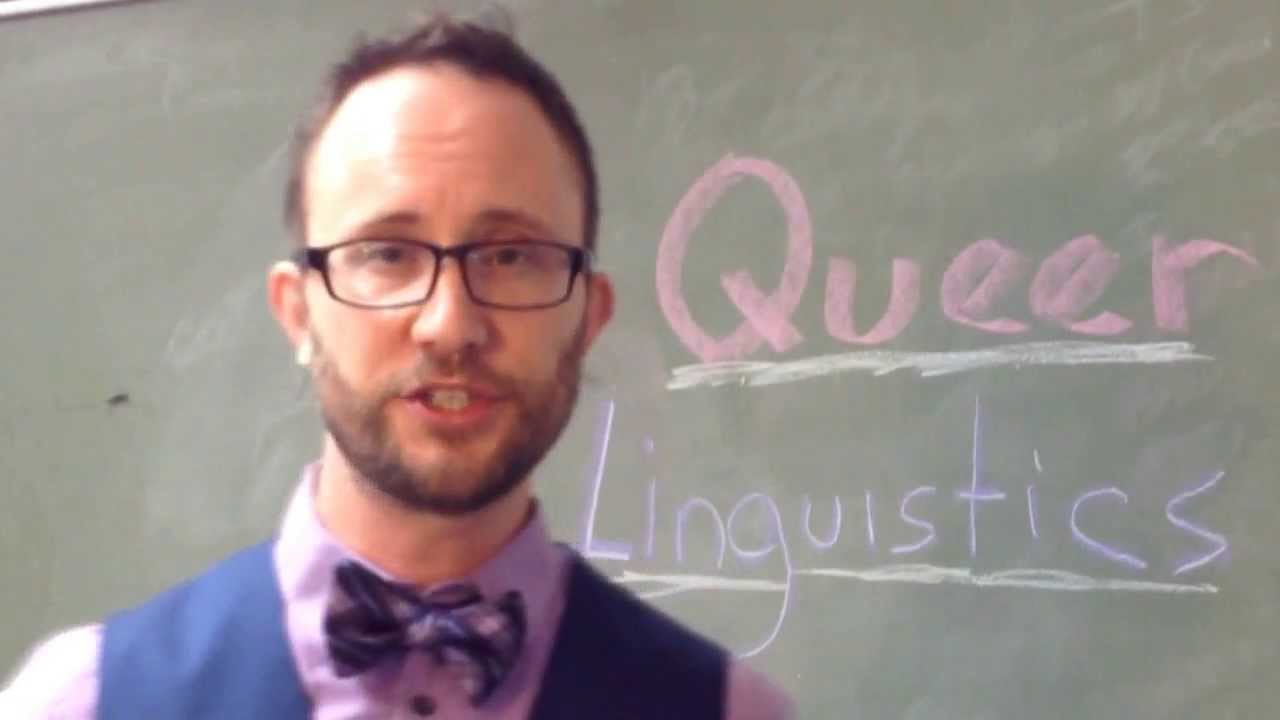DS Bigham
Sorry for the tech problems; the sound is off and the video drops out. Ugh. I’m an academic, not a videographer!
1. For a great text that approaches Queer Linguistics from a couple different angles, check out “Queerly Phrased” by Anna Livia & Kira Hall.
2. Older people sound different than younger people:
Age recognition from voice.
Ptacek, Paul H.; Sander, Eric K.
Journal of Speech & Hearing Research, Vol 9(2), 1966, 273-277.
3. Taller people sound different than shorter people:
Turns out this is a more complex issue than I thought. Here are three takes on it:
An investigation of speaker height and weight identification
Norman J. Lass & Margaret Davis
J. Acoust. Soc. Am. 60, 700 (1976)
Acoustic Parameters in Speaker Height and Weight Identification: Sex-Specific Behaviour
Wim A. van Dommelen & Bente H. Moxness
Language and Speech July/September 1995 vol. 38 no. 3 267-287
How Well Does Average Fundamental Frequency Correlate with Speaker Height and Weight?
Künzel H.J.
Phonetica 1989;46:117–125
4. Most difference relate to who we are socially: https://www.youtube.com/watch?v=pA5DuX1MQSM
You should also check out a basic intro to sociolinguistics text, like:
R. Wardhaugh – “An Introduction to Sociolinguistics”
http://www.amazon.com/An-Introduction-Sociolinguistics-Ronald-Wardhaugh/dp/1405186682
5. Region: Check out the Linguistic Atlas Project at UGA:
http://us.english.uga.edu/
6. Education: A good first read-through (after a basic sociolinguistics text) is:
Anthony Kroch, “Toward a Theory of Social Dialect Variation” (1978)
available at:
ftp://babel.ling.upenn.edu/papers/faculty/tony_kroch/papers/social-dialect-theory.pdf
7. Social Class: After a basic sociolinguistics text, try:
The intersection of sex and social class in the course of linguistic change.
William Labov
Language Variation and Change / Volume 2 / Issue 02 / July 1990, pp 205-254
8. Ethnicity: Have a look at Stanford University’s site for the Center for Race, Ethnicity, and Language (CREAL):
http://www.stanford.edu/group/creal/cgi-bin/drupal/about
9. Jocks/Burnouts: from P. Eckert’s work in suburban Detroit, as in:
Jocks and Burnouts: Social Categories and Identity in the High School
Penelope Eckert. 1989.
Linguistic Variation as Social Practice: The Linguistic Construction of Identity in Belten High (Language in Society)
Penelope Eckert. 2000.
10. Gender: The International Gender & Language Association’s Facebook page is a good place to start looking for more information:
https://www.facebook.com/InternationalGenderandLanguageAssociationIGALA?fref=ts/Index.html
11. Gender differences are not physical differences:
On explaining certain male-female differences in the phonetic realization of vowel categories
RL Diehl, B Lindblom, KA Hoemeke, RP Fahey – Journal of Phonetics, 1996
12. Quote about the heterosexual market (“while boys appropriate…”) taken from:
P. Eckert – Vowels and Nail Polish
here: http://www.stanford.edu/~eckert/PDF/nailpolish.pdf
13. Rewards and sanctions and the notion of a “marketplace” are all about Pierre Bourdieu and symbolic capital. See here:
http://en.wikipedia.org/wiki/Symbolic_capital
14. Community of Practice: A notion from cognitive anthropology that we’ve adopted in sociolinguistics, see here:
http://en.wikipedia.org/wiki/Community_of_practice .
